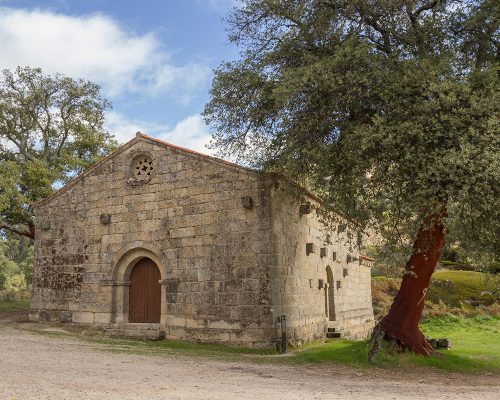Chapel of São Pedro de Vir-a-Corça
Monsanto
Monsanto
It has a nave and tripartite apse, formed by an ousia flanked by narrow apsidioles. The doorway is in semi-circular arch, topped by a rose window; the protruding blocks under it may have supported a porch, but those on the south facade do not have a defined function. Inside, in naves separated by columns with Ionic capitals, it has two excavated tombs that are part of an older necropolis that extends down the hill. In front of the Chapel, a simple bell tower rises from a rock. It dates from the early 13th century, with remodeling in the 15th century. Due to the advanced state of its deterioration, it was rebuilt in its current form between 1979 and 1983. The location soon became the object of an important pilgrimage, which arose from a hermitage, which the popular imagination associates with a mythical anchorite named Amador; it also became the venue for a fair, for which D. Dinis granted a charter in 1308. Together with the chapel of S. Miguel next to the castle, they constitute two of the last examples of the national Romanesque era.


